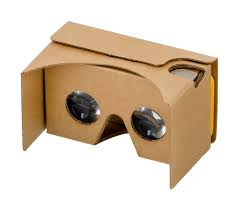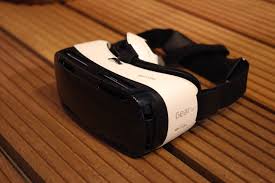There are still those who say that gaming and technology is dumbing down our kids, while others say harnessing the things gamers are already learning is one way to Use Gaming to Save the World. There is no doubt that our kids are digital natives: there were born in a digital world with devices in their hands from the start of their childhoods.
The technology just keeps advancing and becoming more immersive. Xbox Kinect and other such devices let you control game play with your body through sensing and 3D scanning. The same technology can now be used to personalize in game avatars.
The next step is virtual reality, and as it becomes more affordable the uses for this technology are growing. Not only is it being used for gaming, but for market research through virtual store tours and study groups to remote library tours. Virtual tours are even being created to help students “visit” campuses to help them choose the right college.
But that’s not all. Library tours and virtual tours of stores have led to another use for virtual reality: virtual travel. How can you experience the pyramids of Egypt or the mountains of the Himalayas without going there? While the experience won’t be “real” it will look real, and depending on how immersive the program or app is presenting it, it may feel pretty real too. So how does all this work, and how do you get your kids started?
Filming
The first key is that the location must be captured in a format that allows the user to “look around.” This takes either a special camera, or ideally several cameras mounted on a device that allows them to “see” and record 360 degrees.
This footage must then be stitched together using special software. You can film your own 3D footage using some relatively inexpensive equipment, like the Ricoh Theta S, although obviously the quality won’t equal that of a professional set up.
Viewing
Viewing the footage can be as simple as watching a 360 degree video like this one on your computer, and moving the view with your mouse. But for a more immersive experience, you need a headset of some sort. And there are a lot of options. Here are some, from cheapest to most expensive.
Google Cardboard
Google Cardboard comes in several variations, and is essentially a headset made of, well, cardboard. It can be purchased, 3D printed, or made, and holds your smart phone, which essentially acts as the processor for the video or app.
There are of course, several apps and games available through the Google Play store, as well as through the Apple store. They range from simple VR experiences to a little more complex games.
Or course, for audio, you will need to use headphones connected to your phone, and the experience is not the most high tech or immersive. But it can be fun for kids and give them an idea of what Virtual Reality is all about.
Samsung Gear VR and Zeiss VR One
Want to take it to the next level? A step beyond Google cardboard, but still consumer like are a couple of good headsets, although there are more emerging all the time. The Zeiss VR One can be used with either the iPhone or most Samsung devices.
The Samsung Gear VR works with Samsung phones (go figure) but “trays” (the part that holds your phone) will likely be developed aftermarket for various devices. The advantage of these units over Google Cardboard? Well, besides sturdier construction that allows for a better experience, they also have headphones integrated, and the Samsung will also run Oculus Apps. Oculus is the leader in VR at the moment, and having access to those apps does go a long way.
Oculus Rift
The best of the best, and the most expensive of course, is the Oculus Rift. This headset is not powered by your phone, but instead must be tethered to a computer that has a much faster processor. This is because the experience is much richer, and the software requires more memory to run.
Of course, unless you have a fairly healthy bank account, affording the bundles (available the end of this month) may be challenging.
Apps, Software, and Places
So where can you go with virtual reality? The options are increasing as more and more 3D filming is done in various locations. Google is adding places fairly rapidly using the programs it already has in place for street views/ They’ve introduced a program for schools called Google Expeditions using their own Google Cardboard units and smartphones.
National Geographic also has filmed some destinations like this Virtual Yellowstone video, with more in the planning stages. They plan to have other exotic destinations available soon, and even have an augmented reality roadshow that allows users to “pet” dinosaurs and other animals at the mall. Another exhibit, National Geographic Earth Explorers is a stunning use of virtual reality in a museum environment, and much of this footage could soon be available for use on consumer headsets.
Besides those things, what is virtual reality good for? Well, besides letting your kids travel, it can bring their coloring to life through apps like Quiver. Apps like Layar bring infographics, photos and text to life using virtual reality technology. When it comes to learning, 4D Anatomy is an app that allows biology students to do virtual dissections without specimens.
As technology becomes more affordable, and more apps and content is developed, virtual reality will become a part of our kids lives, at school and at the library. Using virtual reality at home too can not only get them ready, but can take them places no kid has gone before without having to leave the living room.


